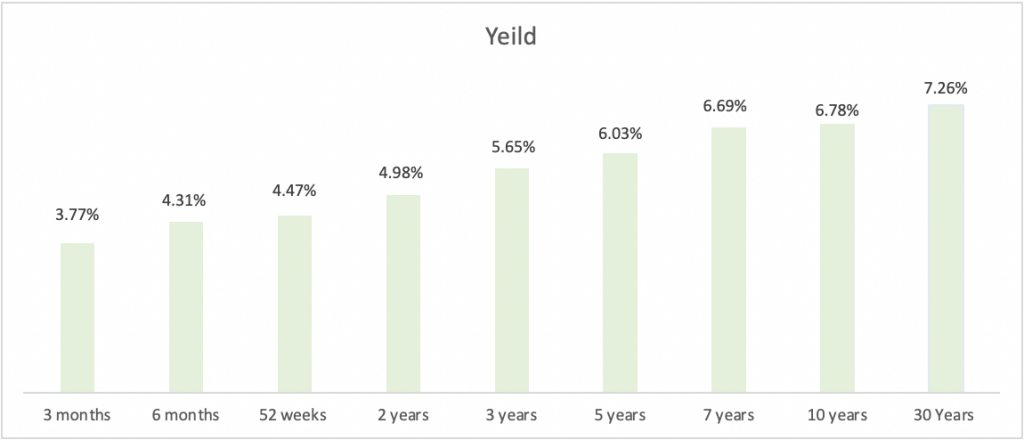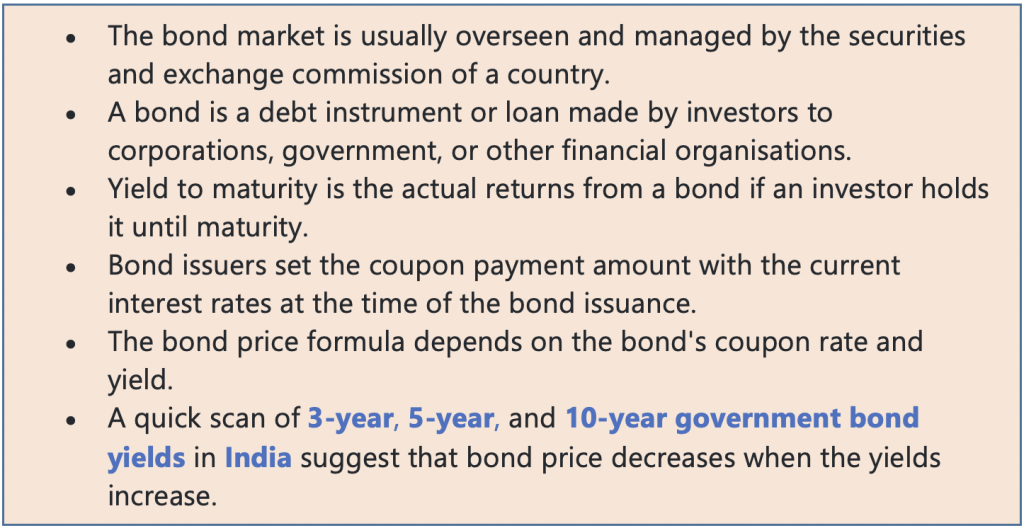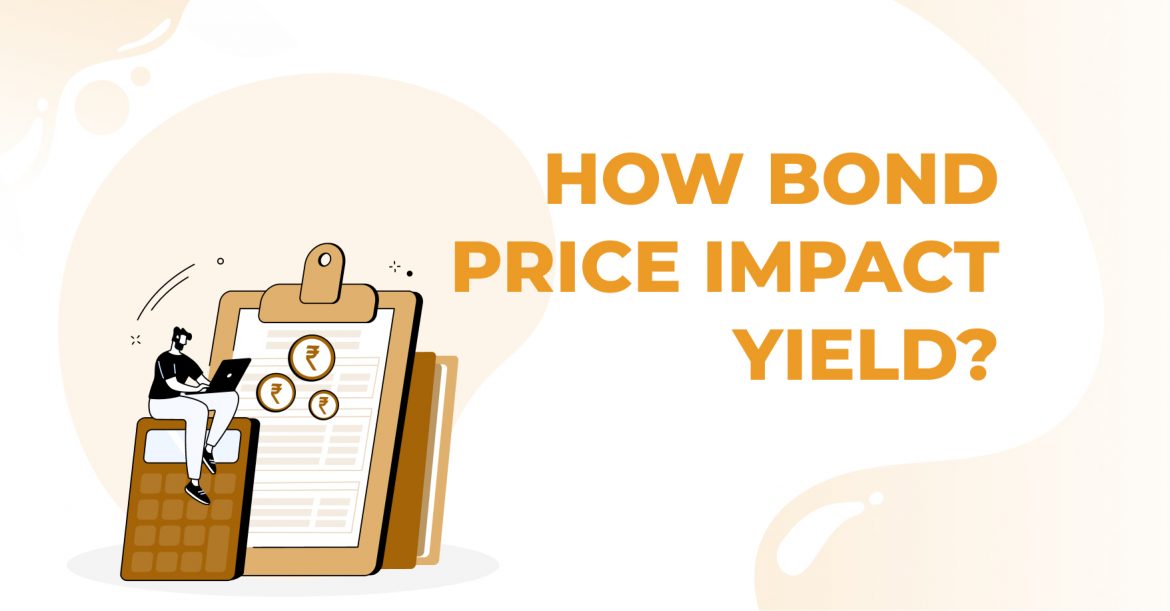Bonds have emerged as a good substitute for equity investments and bank fixed deposits. However, knowing the relationship between yield and price is crucial for making the right investment decision.
Introduction : Bond Yields
Bonds have emerged as a rewarding alternative investment option for low-risk investors in India. Since bonds are traded in the secondary market, they are much less volatile than equity stocks traded in the primary market. Although mutual funds in general and bond funds in particular facilitate bond investment, you can also invest directly in bonds. Stability and decent returns frequently attract buyers to the bond market.
The bond market is usually overseen and managed by the securities and exchange commission of a country. For instance, the Securities and Exchange Board of India controls the bond market.
Earlier, only High Net Worth Investors (HNIs) and corporate financial institutions could invest in bonds. Presently, retail individual investors can conveniently invest in high-yield bonds in India. Investors often prefer investing in 3-year or 5-year bonds in India for getting higher yields.
However, before investing in bonds, it is wise to know the coupon rate, present value (read: price), prevailing interest rates, and the bond’s face or par value.
This article explains the relationship between bond yields and bond prices and also discusses the formula to help you make sensible investment decisions in fixed income securities.
What is Bond Price?
Bonds are generally issued by Central and State governments to get funds for social and infrastructural development projects. The government also issues bonds to manage its debt obligations. Bonds, like debentures, are fixed income securities with a fixed, predefined interest rate and maturity.
When investors buy a government or corporate bond, the bond issuer promises a coupon payment rate. The coupon rate refers to the prevailing interest rate of a bond. When the bond matures, investors get the coupon rate. This is why bonds are known as fixed-income assets. Bonds have different maturity dates, typically ranging from one year to thirty years.
Although bonds deliver fixed returns, that isn’t why investors invest in short or long term bonds. They invest by looking at the bond’s yield, price, and value. Investors carefully evaluate the bond yield curve before making investment decisions.
What is Bond Yield?
Investors invest in government and corporate bonds primarily for the ‘Yield’ component, not the coupon rate. Under normal circumstances, the yield remains comfortably higher than the price. This is what makes the existing bonds more attractive and remunerative than bank term deposits.
Bond yield is closely related to its price. It refers to the actual return and not the actual price of the bond. Yield is also the real interest rate of a bond. Bond yields are set in many ways.
The simplest way of setting the yield is by making it equal to the coupon rate or a bond’s par, meaning the money the bond issuer promises to pay investors. The current yield of a bond is calculated by comparing it with the bond’s interest rate or coupon rate. A bond’s yield is also calculated through Bond Equivalent Yield (BEY), Yield to Maturity (YTM), and Effective Annual Yield (EAY).
Bond issuers set the coupon payment amount with the current interest rates at the time of the bond issuance. The yield is typically more than the cash rate to make bonds more attractive than term deposits.
While mutual funds, particularly bond funds, make it easier to invest in bonds, how to invest in corporate bonds in India? You can invest directly in corporate bonds through a brokerage account or opt for corporate bond mutual funds or ETFs, which provide diversified exposure to the bond market.
What is the Relationship Between Bond Price and Bond Yield?
Bond yield and price share an inverse relationship. If a bond’s price is lower than its face value, the yield will be higher than the coupon payment rate. However, if a bond’s price is higher than its face value, its yield will be lower than the coupon payment rate.
So, the bond price formula depends on the bond’s coupon rate and yield. An increase in bond prices means lower yields, while a decrease in bond prices means higher yields.
Bond price also shares an inverse relationship with the interest rates. If the prevailing interest rates rise in the market, bond prices decrease. In contrast, if the interest rates decline, bond prices increase.
Interest rates are related to the inflation rate and share an inverse relationship. So, if a country’s inflation is high, the country’s central bank increases the interest rates to tame inflation. Conversely, if inflation is in control, the central bank may reduce the interest rate to boost the country’s economy. So, a bond’s price is inversely related to its yield and interest rates, while interest rates are inversely related to the inflation rate.
What is the Difference Between Bond Yield and Price?
In simple terms, bond yield refers to the actual returns from a bond, while bond price refers to the amount investors pay to purchase a bond. Bonds have three elements – Face Value or Par Value, Yield or Yield to Maturity, and Price.
Yield (indicated in percentage) refers to the total amount (return) an investor will get if they hold the bond until maturity and reinvest all coupons at the same value as the bond.
In contrast, the bond price is a bond’s monetary value (also indicated in percentage) an investor will receive on maturity. A bond’s price includes the investment amount as well the coupon payment.
Bond Price Formula: What Determines a Bond’s Price?
Here is the formula for calculating bond prices:
Bond Price = ∑ (Cn / (1+YTM)n ) + P / (1+i)n
Where:
- n = Period which takes values from 0 to the nth period till the cash flows ending period
- Cn = Coupon payment in the nth period
- YTM = interest rate or required yield
- P = Par Value of the bond
Let’s understand this with an example:
Imagine you plan to invest in a bond whose Face Value is INR 1,000, coupon rate is 10%, yield or interest rate is 8%, and maturity is 5 years. If you apply the formula ‘= ∑(Cn / (1+YTM)n )+ P / (1+i)n‘ using the figures stated above, the result will be 1079.9.
Why do Bond Prices Fall When Yields Rise?
A quick scan of 3-year, 5-year, and 10-year government bond yields in India suggest that bond price decreases when the yields increase.
But why do yields increase?
When the economy’s interest rates rise, investors expect more coupon rates from a new bond than existing ones. Since most bonds pay fixed coupon rates, old bonds become less attractive when interest rates increase.
This is because investors would like to invest in new bonds with higher coupon rates. This prompts the bond yields to increase even when the bond prices decrease.
What is the Bond Yield Right Now?
Before investing in a long or short-term bond, check the 10-year government bond yield in India since it is considered the benchmark. Here is the most comprehensive list of high-yield bonds in India:
Note – All values are as of 17/03/2022

Now that you know the relationship between bond price and bond yield, invest in India’s best high yield government and corporate bonds to reap rich dividends, safely and securely. Since bond yields have been hovering around multi-year highs, now is the best time to invest in top-class bonds.
Key Highlights







